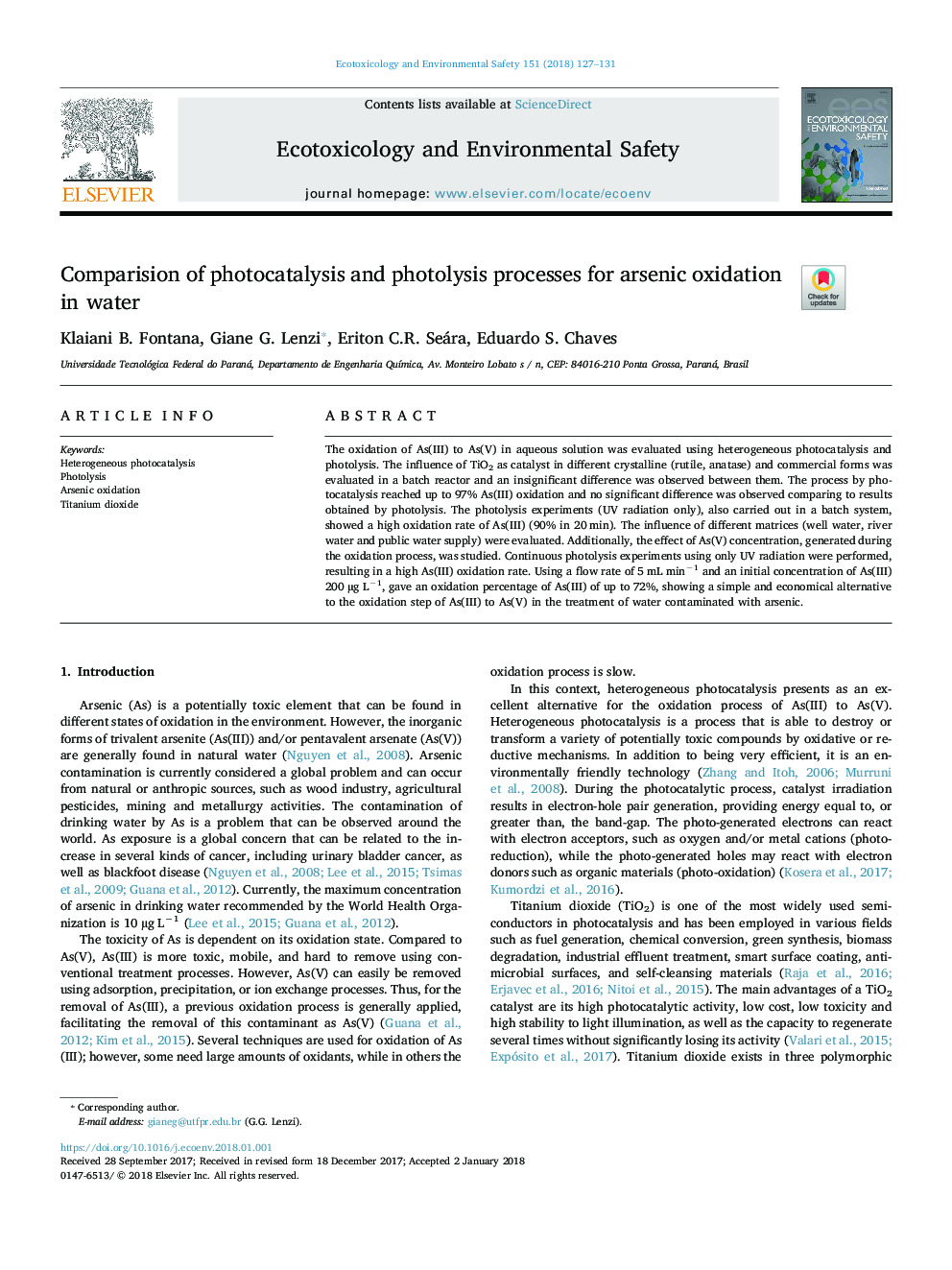| Article ID | Journal | Published Year | Pages | File Type |
|---|---|---|---|---|
| 8854314 | Ecotoxicology and Environmental Safety | 2018 | 5 Pages |
Abstract
The oxidation of As(III) to As(V) in aqueous solution was evaluated using heterogeneous photocatalysis and photolysis. The influence of TiO2 as catalyst in different crystalline (rutile, anatase) and commercial forms was evaluated in a batch reactor and an insignificant difference was observed between them. The process by photocatalysis reached up to 97% As(III) oxidation and no significant difference was observed comparing to results obtained by photolysis. The photolysis experiments (UV radiation only), also carried out in a batch system, showed a high oxidation rate of As(III) (90% in 20 min). The influence of different matrices (well water, river water and public water supply) were evaluated. Additionally, the effect of As(V) concentration, generated during the oxidation process, was studied. Continuous photolysis experiments using only UV radiation were performed, resulting in a high As(III) oxidation rate. Using a flow rate of 5 mL minâ1 and an initial concentration of As(III) 200 µg Lâ1, gave an oxidation percentage of As(III) of up to 72%, showing a simple and economical alternative to the oxidation step of As(III) to As(V) in the treatment of water contaminated with arsenic.
Related Topics
Life Sciences
Environmental Science
Environmental Chemistry
Authors
Klaiani B. Fontana, Giane G. Lenzi, Eriton C.R. Seára, Eduardo S. Chaves,
